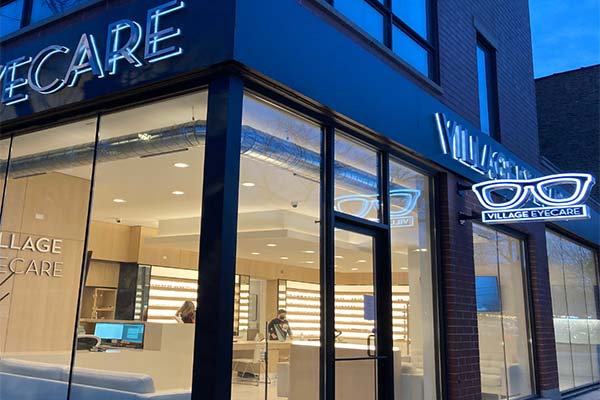Household Eye Doctors in Andalusia: Comprehensive Vision Treatment
Household Eye Doctors in Andalusia: Comprehensive Vision Treatment
Blog Article
Comprehending the Different Vision Correction Procedures Available for Clearer Sight
In the world of vision correction procedures, a plethora of alternatives exist to attend to refractive mistakes and provide individuals with clearer view. From the extensively recognized LASIK surgical treatment to much less intrusive treatments like PRK and implantable lenses, the field of ophthalmology provides a variety of strategies customized to fit different demands and preferences. Each treatment comes with its very own set of factors to consider, advantages, and possible threats. Recognizing the nuances of these vision improvement approaches is vital for making educated choices regarding one's visual health. Allow's explore the ins and outs of these treatments and clarified the path to attaining enhanced vision clearness.
LASIK Surgical Procedure
LASIK surgery is an usual refractive procedure made use of to correct vision problems such as astigmatism, farsightedness, and nearsightedness. This surgical strategy, which represents Laser-Assisted in Situ Keratomileusis, aims to improve the cornea to improve exactly how light is focused on the retina, eventually boosting vision clearness. During the treatment, a thin flap is created on the cornea, and a laser is made use of to remove precise quantities of tissue to reshape it properly. This reshaping enables light to be accurately concentrated onto the retina, remedying refractive errors.
Among the key advantages of LASIK surgical procedure is the rapid renovation in vision experienced by clients. Lots of people discover a considerable enhancement in their eyesight promptly after the procedure. Furthermore, the majority of individuals report marginal pain and discomfort throughout the surgery and recovery period. The recuperation time for LASIK is fairly fast, with numerous individuals going back to their day-to-day activities within a day or more post-operation. In general, LASIK surgical treatment is a popular option for individuals seeking a lasting service for their vision problems.
PRK Procedure

PRK is an ideal alternative for people with slim corneas or those at a greater risk of eye injuries, as it does not include creating a corneal flap. The healing process for PRK is somewhat longer contrasted to LASIK, as the epithelium needs time to restore. Individuals may experience discomfort and fuzzy vision for a couple of days complying with the procedure.
Regardless of the longer recovery time, PRK can yield excellent lead to vision enhancement, making it a valuable alternative for those that might not appropriate candidates for LASIK surgical procedure. - Andalusia Pediatrics
Implantable Lenses
In comparison to PRK where the cornea is improved straight, implantable lenses provide one more approach for correcting vision by putting man-made lenses inside the eye. This procedure is especially valuable for people with high levels of astigmatism, nearsightedness, or farsightedness that may not be suitable candidates for laser surgical treatments like LASIK or PRK.
Implantable lenses, also known as phakic intraocular lenses, job by supplementing the eye's all-natural lens with a fabricated one. These lenses can be positioned before the all-natural lens (former chamber) or resource behind the iris and in front of the natural lens (posterior chamber) By readjusting the power and positioning of these lenses, ophthalmologists can effectively remedy refractive mistakes and improve aesthetic acuity.
One advantage of implantable lenses is that they are exchangeable and detachable, providing adaptability for future changes. However, as with any type of operation, there are dangers involved, such as infection or cataract formation. People thinking about implantable lenses ought to seek advice from an eye treatment specialist to establish one of the most suitable alternative based upon their specific demands and eye health.
Corneal Rings

The treatment for inserting corneal rings is fairly fast and minimally intrusive, commonly done as an outpatient treatment. During the surgical procedure, the ophthalmologist makes a small cut in the cornea and inserts the rings at a specific deepness. Once in place, the rings help to improve the cornea, providing a smoother surface for light to go into the eye, which can cause more clear vision.
Corneal rings are taken into consideration a relatively easy to fix treatment, as they can be removed or changed if essential. While they might not entirely remove the need for glasses or call lenses, corneal rings can considerably improve vision high quality and total visual convenience for individuals with keratoconus or various other corneal irregularities.
Refractive Lens Exchange
Following the adjustment of corneal irregularities with treatments like corneal rings, an additional vision adjustment technique that can deal with refractive mistakes is Refractive Lens Exchange (RLE) RLE is a surgery that includes changing the eye's natural lens with a man-made intraocular lens (IOL) to correct refractive errors such as farsightedness, nearsightedness, and presbyopia. This procedure is especially helpful for individuals that may not appropriate candidates for procedures like LASIK or PRK because of aspects such as thin corneas or high refractive mistakes.
Healing time for RLE is fairly fast, and clients can anticipate better vision soon after the treatment. As with any kind of medical treatment, possible risks and problems exist, so a comprehensive appointment with an eye treatment professional is important to identify if RLE is the ideal vision correction alternative.
Verdict

In the world of vision correction treatments, a multitude of choices exist to attend to refractive mistakes and provide people with clearer view.LASIK surgery is an usual refractive treatment used to fix vision troubles such as astigmatism, farsightedness, and nearsightedness.While also a typical refractive procedure, the PRK (Photorefractive Keratectomy) strategy varies from LASIK surgical procedure in its method to fixing vision troubles.Adhering to the correction of corneal irregularities with procedures like corneal rings, another vision adjustment method that can address refractive errors is Refractive Lens Exchange (RLE) LASIK surgical treatment, PRK treatment, implantable lenses, corneal rings, and refractive lens exchange are all alternatives that can attend to various vision issues.
Report this page